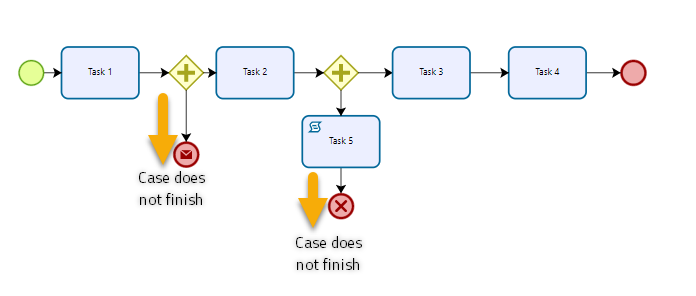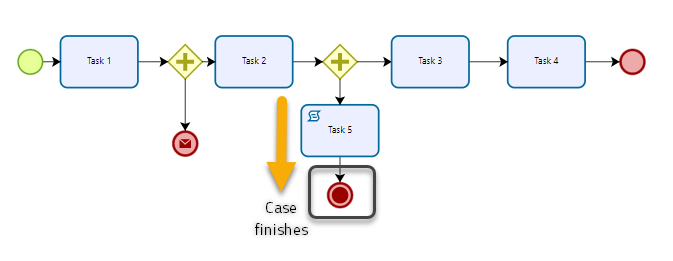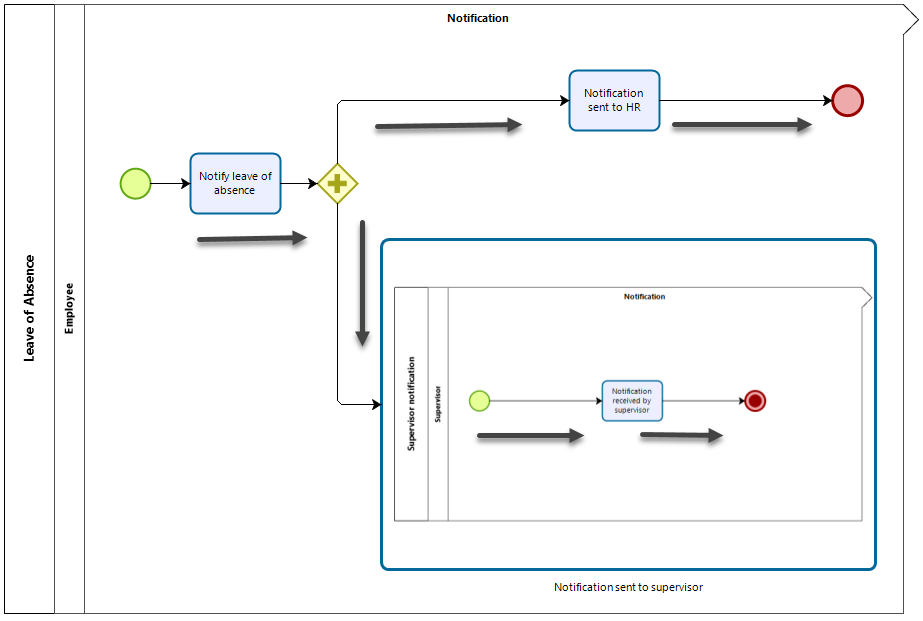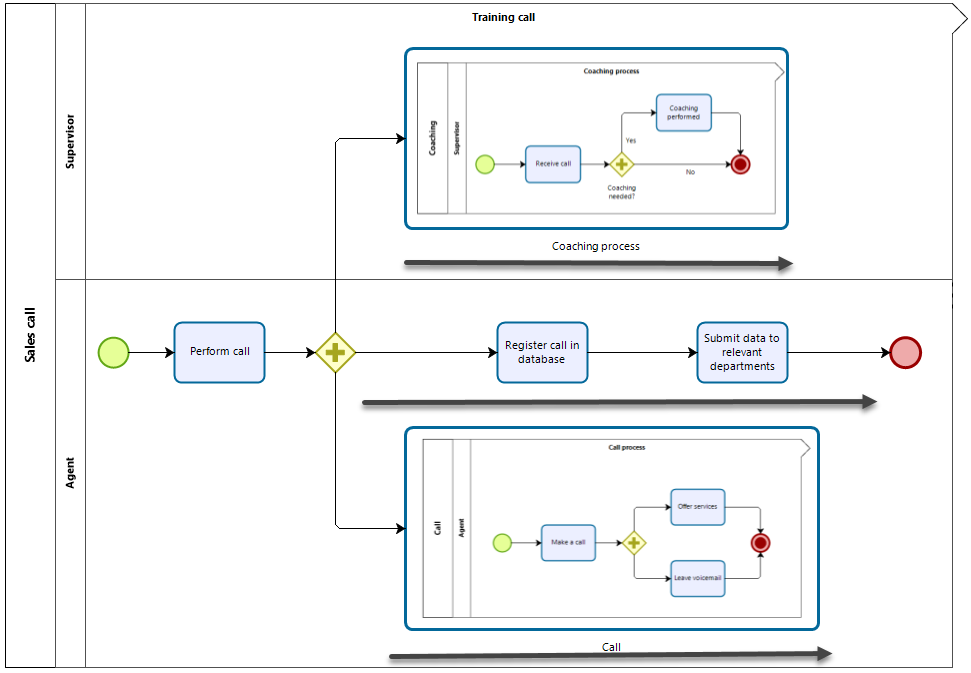End Events Properties
End Event
Considerations
- The End Event has no outgoing transitions.
- The End Event verifies whether there are any pending Activities (tokens) for each case.
If there are no pending Activities, the Process is closed automatically. - The typical use of this shape occurs in business situations where there are parallel paths,
and one path has no more Activities to be carried out, but the Process should not be closed altogether. - This element cannot be synchronized with another point in the Process.
- The Terminate End Event is an optional shape in diagramming the Process. However, it is advisable to use it.
Basic Properties
- Display Name: This is the display name of the Event that is shown in the Work Portal.
- Name: This is the name of the Event in the database.
- Description: Displays additional information for the Event.
Message End
Considerations
- Message End is always a throw shape.
That is, in order to use a Message End, there must be an Intermediate Message Event or a Start Message that catches the message. - The Message End should be configured to identify the target Process and the target Element.
- The shape that catches the message and the Message End should have the exact same name.
Basic Properties
- Display Name: This is the display name of the Event that is shown in the Work Portal.
- Name: This is the name of the Event in the database.
- Description: Displays additional information for the Event.
Error End
Considerations
- Indicates that a named Error should be generated.
- All currently active threads of the Process are terminated.
- The Error will be caught by a Catch Error Intermediate Event.
Basic Properties
- Display Name: This is the display name of the Event that is shown in the Work Portal.
- Name: This is the name of the Event in the database.
- Description: Displays additional information for the Event.
Cancel End
Considerations
- Used within a Transaction Sub-Process.
- Indicates that the Transaction should be canceled and an alternative flow can be performed.
Basic Properties
- Display Name: This is the display name of the Event that is shown in the Work Portal.
- Name: This is the name of the Event in the database.
- Description: Displays additional information for the Event.
Signal End
Considerations
- Signal End is always a throw shape.
That is, in order to use a Signal End, there must be a Signal Event that catches the message. - A signal is sent to any Process that can receive it, but it does not have a specific source and target.
Any catch shape with the same name will be triggered. - The shape that catches the signal and the Signal End should have the exact same name.
- The Message End should be configured to identify the target Process and the target Element.
Basic Properties
- Display Name: This is the display name of the Event that is shown in the Work Portal.
- Name: This is the name of the Event in the database.
- Description: Displays additional information for the Event.
Terminate End
Considerations
- When Terminate End is reached in a Process, the Case is closed even if there are pending activities.
- The Terminate End Event is an optional shape in diagramming the Process.
However, it is advisable to use it in the diagram.
Basic Properties
- Display Name: This is the display name of the Event that is shown in the Work Portal.
- Name: This is the name of the Event in the database.
- Description: Displays additional information for the Event.
Examples
End Events Different from Terminate
Since these types of events do not end the current case, the case stops until Task 4 finishes,
closing all active paths. See the example below:

Using the Terminate End Event
In the next example, there are several End events in this process.
However, if a case reaches the Terminate End event, for example, after executing Task 5, the case is finished.
Other elements of the case are also closed.

Using Sub-Processes
It is important to consider that Terminate End events only end the current process flow.
When the subprocess' case reaches the Terminate End event, only the case associated with the subprocess ends.
The case related to the parent process is not affected and does not end. See the example below:

In this example, you can observe that although the Notification sent to supervisor case,
which is associated with the subprocess, is ended by the Terminate End event,
the Notification sent to HR case is executed regardless of the outcome of the Notification sent to supervisor case.
Multiple Sub-Processes with Terminate End Events
In this second example, the case related to the parent process has two cases associated with subprocesses.
Both cases have Terminate End events. See the example below:

In this example, we have a case for a Sales call.
This case has two other cases related to subprocesses.
Although these cases end by the Terminate End event, the parent case related to the process continues its process flow.